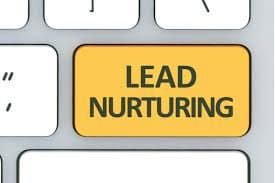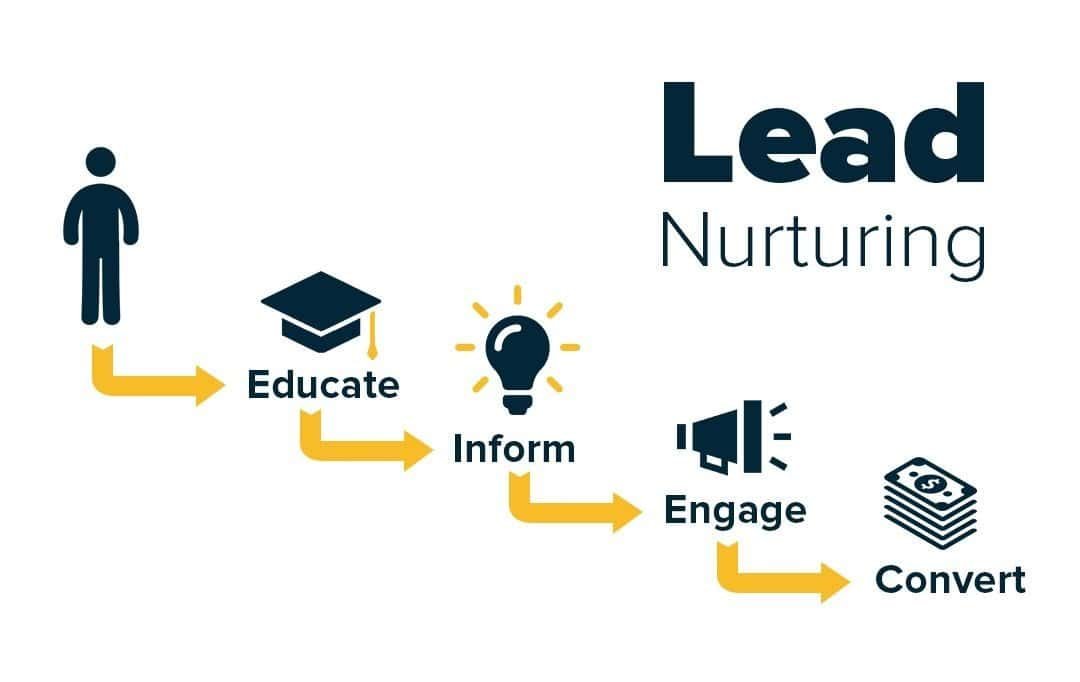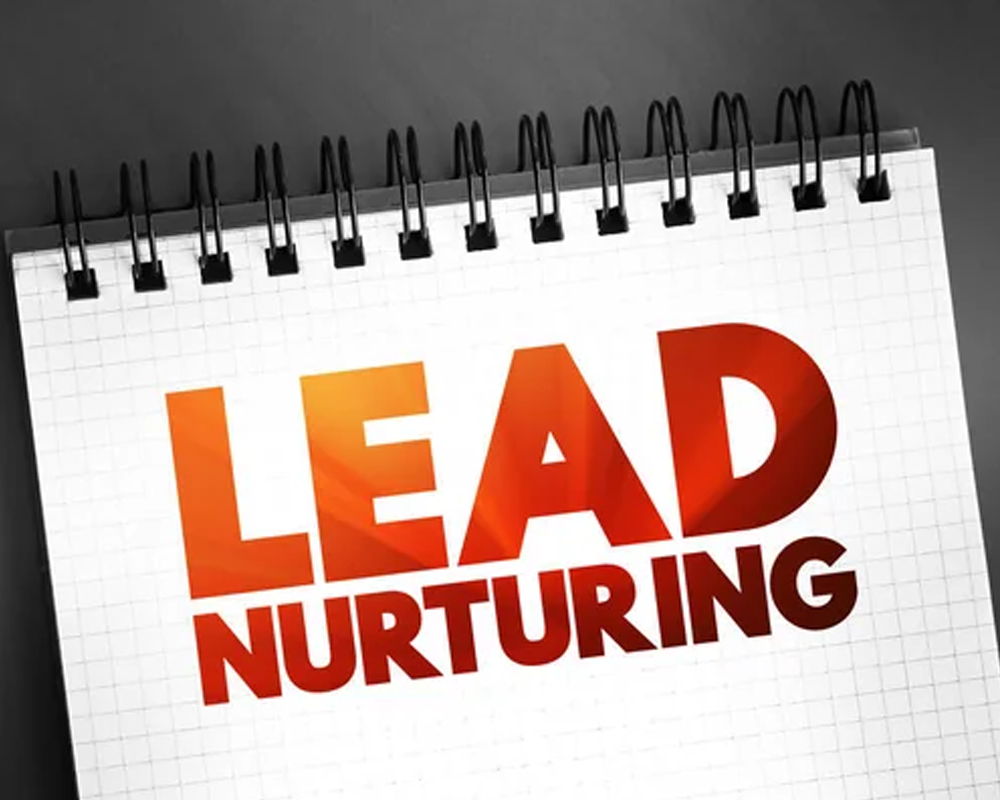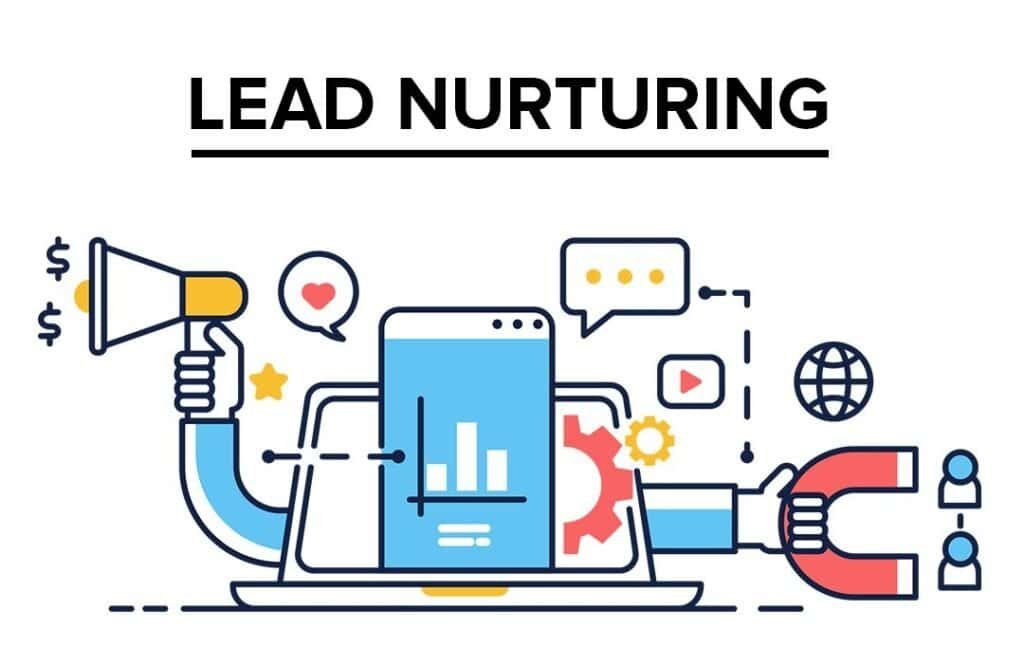Howdy! So let’s get to it, and let’s talk about lead nurturing, the secret sauce of email marketing. It’s like dating, but for your business—you’re building relationships that hopefully lead to something more, like a sale! By staying consistent and engaging, you can keep your audience interested and invested in your brand. Remember, incorporating email marketing best practices will help you craft messages that resonate and drive action. Ultimately, the goal is to turn those warm leads into loyal customers who can’t wait to hear from you again.
Why is Lead Nurturing the Beyoncé of Email Marketing?
Lead nurturing is about building and maintaining relationships with your audience, from the moment they first show interest in your brand all the way through the sales funnel. Think of it like a garden: you’re planting seeds (leads), nurturing them with water and sunshine (valuable content and personalized emails), and watching them blossom into loyal customers (cha-ching!).
It’s all about earning their trust and showing them how awesome your brand is, so when they’re ready to buy, you’re the first name that pops into their head.
Unlocking Explosive Growth: The Power of Advanced Lead Nurturing
Here’s the thing: basic lead nurturing is good, but advanced lead nurturing? That’s where the real magic happens! It’s about going beyond the generic “welcome” emails and crafting personalized, targeted campaigns that speak directly to your leads’ needs and desires. We’re talking about:
- Skyrocketing Conversions: Nurtured leads make buying decisions faster, leading to a shorter sales cycle and more revenue for you!
- Turning Prospects into Raving Fans: Happy customers are more likely to recommend your brand to their friends, giving you free word-of-mouth marketing—the best kind!
- Making Your Brand Unforgettable: Lead nurturing keeps your brand top-of-mind, so when your prospects are ready to buy, you’re the obvious choice.
Sounds pretty great, right? Let’s break down the steps to creating your own advanced lead nurturing strategy.

1. Segmentation Secrets: Turning Your Email List into a Personalized Powerhouse
Segmentation is the MVP of advanced lead nurturing. It’s about dividing your email list into smaller, more targeted groups based on their
- Demographics: Age, location, gender
- Behavior: Website activity, email engagement, purchase history
- Engagement Levels: How often they open your emails, click on links, etc.
Think of it this way: You wouldn’t send the same email to your grandma and your best friend, right? Segmentation lets you treat your email list like the diverse group it is, sending personalized messages that resonate with each individual.
2. Crafting Captivating Content: Hooking Your Audience with Killer Emails
Content is king, baby! But it’s not enough to just create content—you need to create compelling content that speaks directly to your audience’s needs and interests.
Here’s the tea:
- Understand the Buyer’s Journey: Figure out where your leads are in their buying journey (awareness, consideration, decision) and tailor your content accordingly.
- Mix It Up: Don’t just send boring text emails! Spice things up with visuals, videos, and interactive elements to keep things fresh.
- Become the Ultimate Resource: Provide valuable information that helps your leads solve their problems and achieve their goals. Think ebooks, guides, webinars, and blog posts packed with actionable tips.
Remember, your goal is to provide so much value that your leads see you as a trusted friend and expert in your field.
3. The Art of Email Timing: Finding the Sweet Spot that Keeps Your Audience Engaged
Timing is everything in email marketing. Send too many emails, and you risk annoying your subscribers (cue the unsubscribe button!). Send too few, and they might forget about you altogether.
Finding the perfect frequency is a bit of a balancing act, but here are a few tips:
- Consider Your Audience: How often do they want to hear from you? Test different frequencies to see what works best.
- Pay Attention to Engagement: Track your open rates, click-through rates, and unsubscribes to get a sense of what’s working.
- Use Automation: Automated email workflows let you send emails based on specific triggers, ensuring your leads receive the right message at the right time. Think welcome emails, abandoned cart emails, and post-purchase follow-ups.
4. Subject Lines That Sizzle: The Clickbait Secrets to Getting Your Emails Opened
Your subject line is like the headline of your email—it’s the first thing people see, and it determines whether they’ll open your email or send it straight to the trash. 🗑️
To craft subject lines that convert like crazy, try these tactics:
- Keep it Short and Sweet: Aim for 60 characters or less, so the whole subject line shows up on mobile devices.
- Personalize It: Use the recipient’s name or other relevant information to grab their attention.
- Spark Curiosity: Tease them with something intriguing that makes them need to click.
- Create a Sense of Urgency: Use power words like “now,” “limited time,” or “exclusive” to encourage immediate action.
- Test, Test, Test: A/B test different subject lines to see what performs best.
Remember, a killer subject line is the key to getting your foot in the door and delivering your valuable content.

5. Personalization Power: Crafting Emails that Feel Like a Heart-to-Heart
Personalization is more than just slapping the recipient’s name at the top of the email. It’s about understanding their needs, interests, and preferences and tailoring your message accordingly.
Here’s how to level up your personalization game:
- Go Deep with Segmentation: Create highly targeted segments based on a variety of factors, including demographics, behavior, and engagement levels.
- Use Dynamic Content: Change the content of your emails based on the recipient’s data. For example, show them different product recommendations based on their past purchases.
- Send Triggered Emails: Send emails based on specific actions, like signing up for your newsletter or abandoning their cart.
- Be Human: Write like you’re talking to a friend, not a robot. Use a conversational tone and inject some personality into your emails.
The more personalized your emails are, the more likely your leads are to engage with them and move further down the sales funnel.
6. Automating Your Email Empire: Working Smarter, Not Harder
Automation is your secret weapon for lead nurturing dominance! It takes the manual work out of email marketing, allowing you to send the right messages at the right time without lifting a finger.
Here are a few automation must-haves:
- Welcome Series: Grease new subscribers with a series of automated emails that introduce your brand, showcase your best content, and encourage them to engage.
- Lead Nurturing Sequences: Create automated sequences that deliver valuable content and move leads through the sales funnel.
- Behavioral Triggers: Set up triggers that send emails based on specific actions, like visiting a particular page on your website or clicking on a link in an email.
Automation allows you to personalize at scale, nurturing thousands of leads simultaneously.
7. Measuring What Matters: Using Analytics to Fine-Tune Your Lead Nurturing Machine
Data is your best friend when it comes to email marketing. By tracking the right metrics, you can see what’s working, what’s not, and make data-driven decisions to optimize your campaigns.
Keep a close eye on these key performance indicators (KPIs):
- Open Rate: The percentage of people who open your email. A low open rate might indicate a weak subject line or poor deliverability.
- Click-Through Rate (CTR): The percentage of people who click on a link in your email. A low CTR might mean your content isn’t relevant or your call to action isn’t strong enough.
- Conversion Rate: The percentage of people who take a desired action, like making a purchase or signing up for a webinar.
- Unsubscribe Rate: The percentage of people who unsubscribe from your email list. A high unsubscribe rate could signal that you’re sending too many emails, your content isn’t relevant, or you’re being too salesy.
By analyzing your data, you can identify areas for improvement and make sure your lead nurturing campaigns are firing on all cylinders.
8. A/B Testing: Unleashing the Power of Experiments to Optimize Your Emails
A/B testing is like having a superpower that lets you see into the future—sort of. It allows you to test different versions of your emails to see which one performs better.
Here’s how it works:
- Choose a Variable to Test: This could be your subject line, email content, call to action, or anything else you want to optimize.
- Create Two Versions: Create two slightly different versions of your email, with only one variable changed.
- Send Them Out: Send each version to a random sample of your audience.
- Analyze the Results: See which version performs better based on your chosen metrics (open rate, CTR, conversion rate, etc.).
- Choose the Winner: Roll out the winning version to your entire list.
A/B testing takes the guesswork out of email marketing, letting you make data-driven decisions that improve your results.

9. Common Lead Nurturing Mistakes (and How to Avoid Them Like the Plague)
Even the best email marketers make mistakes sometimes. But by learning from the mistakes of others, you can avoid common pitfalls and set yourself up for success.
Here are a few things to watch out for:
- The One-Size-Fits-All Trap: Don’t send the same generic email to everyone on your list. Segmentation is your friend!
- Quantity Over Quality: Focus on sending high-quality, relevant emails rather than bombarding your subscribers with too many messages.
- Ignoring Personalization: Go beyond just using the recipient’s name—personalize your content based on their needs and interests.
- Forgetting About Analytics: Track your results and use data to make informed decisions about your campaigns.
- The “Set It and Forget It” Mentality: Don’t just launch your email campaigns and forget about them. Monitor their performance, make adjustments, and continually optimize for better results.
Conclusion
Advanced lead nurturing through email marketing is a journey, not a destination. It takes time, effort, and a willingness to learn and adapt. But by mastering these strategies, you can transform your email list from a bunch of random addresses into a powerful engine for growth. By implementing strategic lead generation techniques, you can create targeted campaigns that resonate with your audience, ultimately improving engagement and conversion rates. As you refine your approach, you’ll uncover insights into customer behavior that will further enhance your nurturing process. The result is not just a larger email list, but a community of loyal customers eager to support your brand. By consistently applying email marketing best practices, you can build stronger relationships with your audience and foster loyalty over time. Engaging content, personalized messaging, and timely follow-ups are crucial components that enhance your communication efforts. Ultimately, a well-nurtured email list can lead to increased conversions and sustained business success.
Remember, your goal is to build meaningful relationships with your audience, provide value at every touchpoint, and guide them toward becoming loyal, raving fans of your brand.
So go forth, email marketing warrior, and conquer your inbox!
FAQs
How long should my lead nurturing campaigns be? There’s no one-size-fits-all answer, but most lead nurturing campaigns last anywhere from a few weeks to a few months. The length depends on your industry, your sales cycle, and the complexity of your product or service.
What are some good tools for email marketing automation? There are tons of great email marketing platforms out there! A few popular options include Mailchimp, ActiveCampaign, HubSpot, and ConvertKit. Choose a platform that fits your needs and budget.
How often should I send lead nurturing emails? Start with a weekly or biweekly cadence and adjust based on your audience’s engagement. Don’t be afraid to experiment and find what works best for you.

